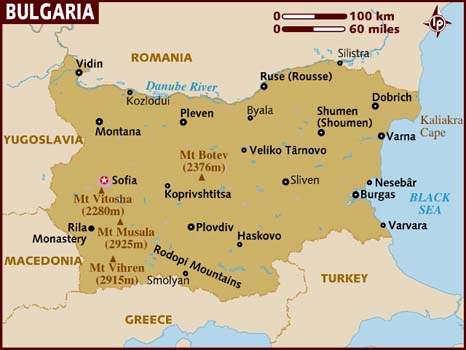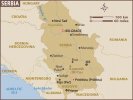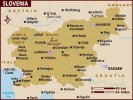
The Republic of Bulgaria is situated in the eastern part of the Balkan Peninsula and faces the Black Sea. In the north it borders with Romania, in the west with countries of the former Yugoslavia and in the south with Greece and Turkey. Bulgaria's center is cut by mountains, which extend from west to east. In the south of the country the climate is Mediterranean with hot, dry summers and mild winters, while in the north is with extreme temperatures and more precipitation in summer. Bulgaria has traditionally focused on agriculture: a revolution in the industry during the fifties of the last century has led to a large increase in production. To the development of agriculture also contributes collectivization of private farms, mechanization, fertilization and irrigation. Each rural zone specializes exclusively in one area. Mechanization has contributed to more workforces in the mines and industry.
AREA: 110.910km²
POPULATION: over 7,500,000
IMPORTANT NATURAL CHARACTERISTICS:
THE HIGHEST PEAK: Musala
THE LONGEST RIVER: Danube
THE LARGEST CITIES: Sofia, Plovdiv, Varna
OFFICIAL LANGUAGE: Bulgarian
STATE SYSTEM: multiparty republic with a unicameral parliament
THE ETHNIC COMPOSITION: Bulgarians (85,3%), Turks (8,5%), Roms (2,6%), Macedonians (2,5%), others (1,1%)
CURRENCY: lev = 100 penny
IMPORTANT SOURCES OF INCOME: copper, iron ore , coal, grapes, wine, fishing, tourism

